
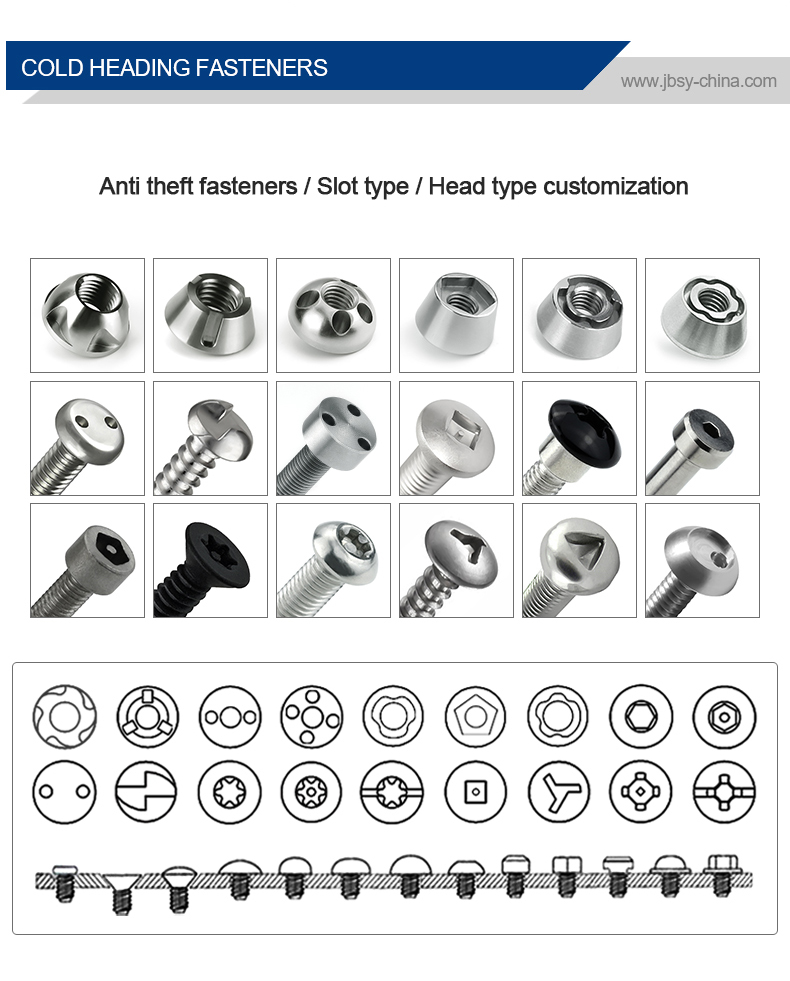
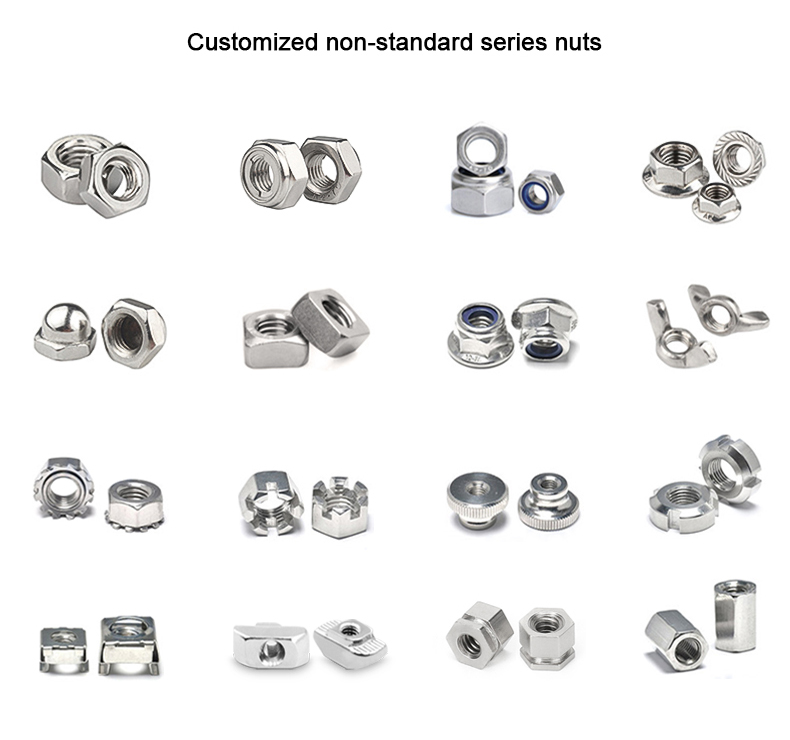
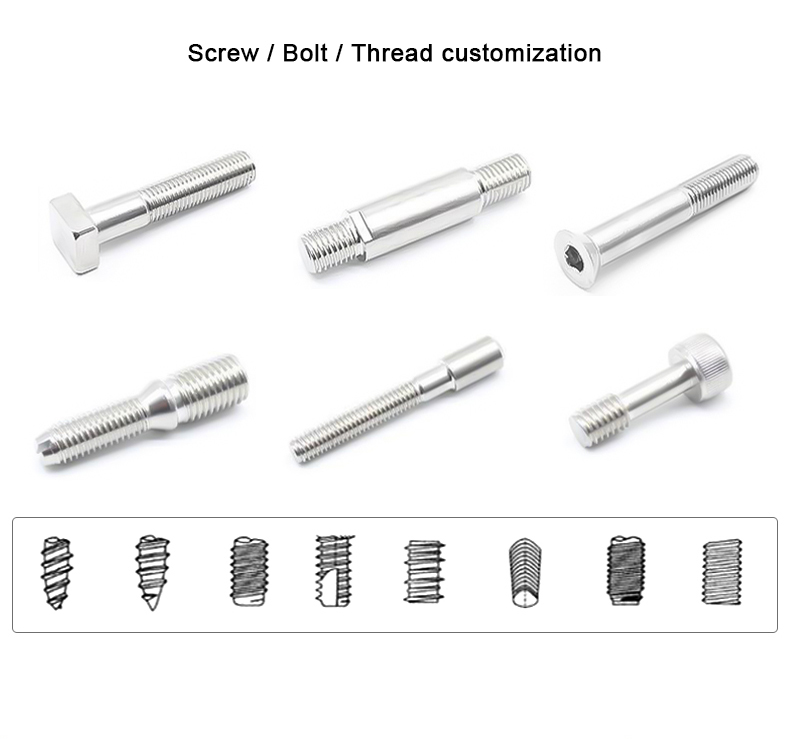
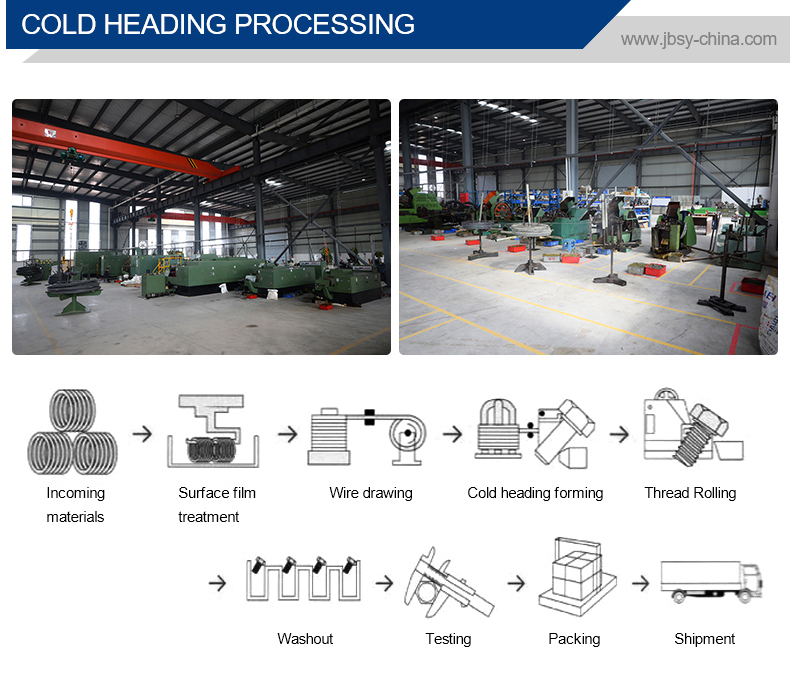
Cold heading process is one of the new processes for pressure machining of less or no cutting
metal. It is a processing method that utilizes the plastic deformation of metal under the action of
external forces, and with the aid of molds, redistributes and transfers the volume of metal to form
the required parts or blanks. The cold heading process is most suitable for producing standard
fasteners such as bolts, screws, nuts, rivets, and pins.etc
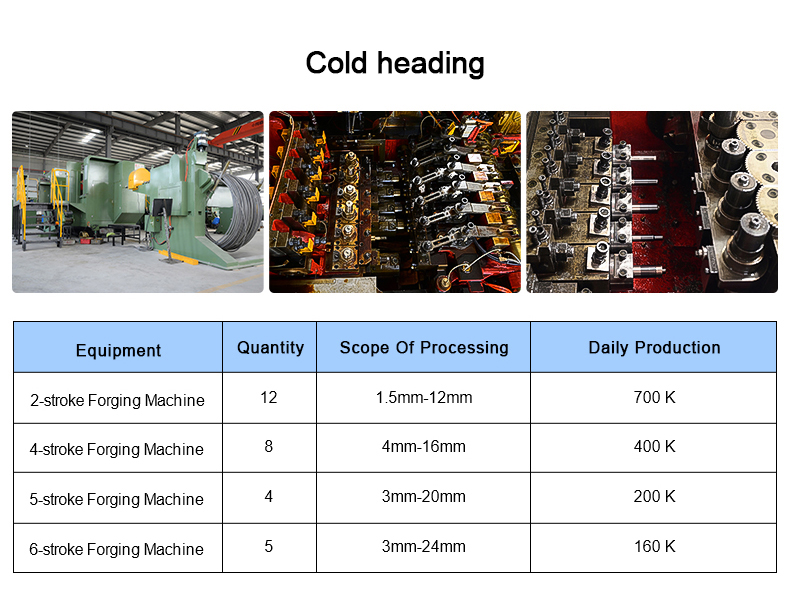
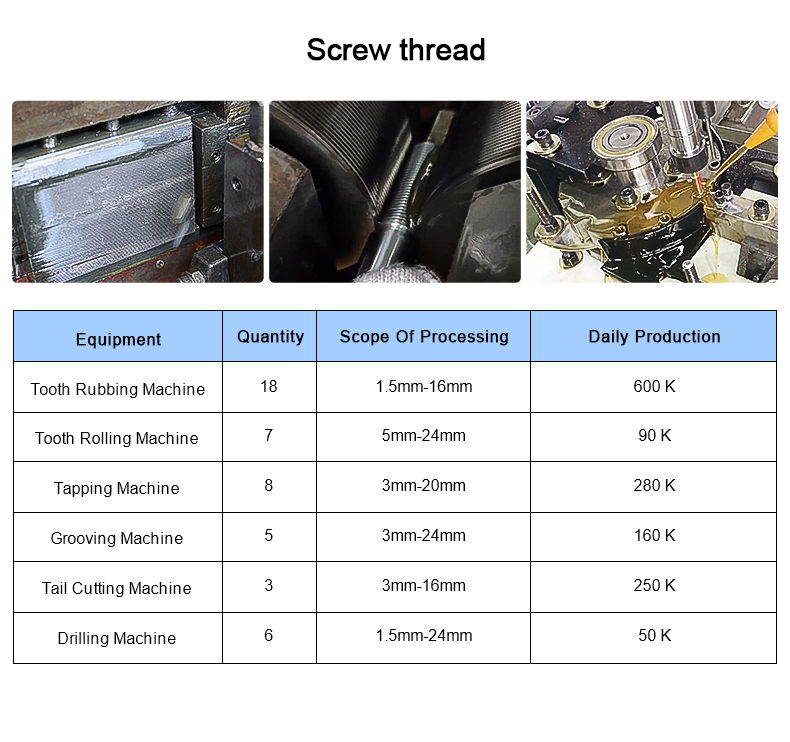
Here’s a structured overall description of safety wire bolts with yellow electroplating:
1. Definition & Purpose
-
Safety Wire Bolts: Fasteners designed with holes or notches to allow the threading of safety wire, preventing loosening due to vibration or rotation.
-
Yellow Electroplating: A surface treatment providing corrosion resistance, aesthetic appeal, and visibility (often for identification or safety marking).
2. Electroplating Process (Yellow)
-
Base Material: Typically steel, stainless steel, or titanium.
-
Plating Layer:
-
Undercoat: Often zinc or cadmium electroplating for corrosion resistance.
-
Topcoat: Yellow chromate conversion coating (for zinc) or yellow dye/paint (e.g., zinc-nickel alloy with yellow passivation).
-
-
Standards: Compliant with ASTM B633 (zinc plating), MIL-DTL-45204 (cadmium), or AMS 2468 (yellow chromate).
- Safety Wire Bolt electroplating yellow
3. Key Features
-
Corrosion Resistance: Yellow chromate layer enhances protection against rust.
-
High Visibility: Bright yellow color aids quick inspection in machinery or aerospace applications.
-
Durability: Withstands harsh environments (e.g., automotive, marine, or aerospace).
4. Applications
-
Aerospace: Engine components, landing gear.
-
Automotive: High-vibration areas (e.g., race cars, motorcycles).
-
Industrial Machinery: Critical bolted joints subject to dynamic loads.
5. Safety Wire Compatibility
-
Pre-drilled holes or wire grooves accommodate stainless steel safety wire (e.g., 0.032″ diameter).
-
Wire wrapping follows ANSI/MSNAS standards to ensure secure locking.
- Safety Wire Bolt electroplating yellow
6. Advantages
-
Vibration Resistance: Prevents bolt loosening.
-
Chemical Protection: Electroplating shields against oxidation.
-
Color Coding: Yellow may indicate specific torque or maintenance requirements.
7. Limitations
-
Temperature Sensitivity: Some yellow dyes degrade at high temps (>250°C).
-
Wear: Plating may wear off under friction; lubricants or additional coatings (e.g., PTFE) can help.
8. Compliance & Certifications
-
ASTM/SAE: Standards for plating thickness/adhesion.
-
RoHS/REACH: Compliance for hazardous substance restrictions.
9. Maintenance
-
Regular inspections for plating wear or wire integrity.
-
Avoid abrasive cleaners to preserve the yellow finish.
- Safety Wire Bolt electroplating yellow
10. Common Specifications
-
Thread Standards: UNC/UNF, METRIC.
-
Grades: Class 8.8, 10.9 (steel); A2/A4 (stainless).
This description ensures clarity for technical documentation, procurement, or engineering applications. Let me know if you need details on specific standards or testing methods!
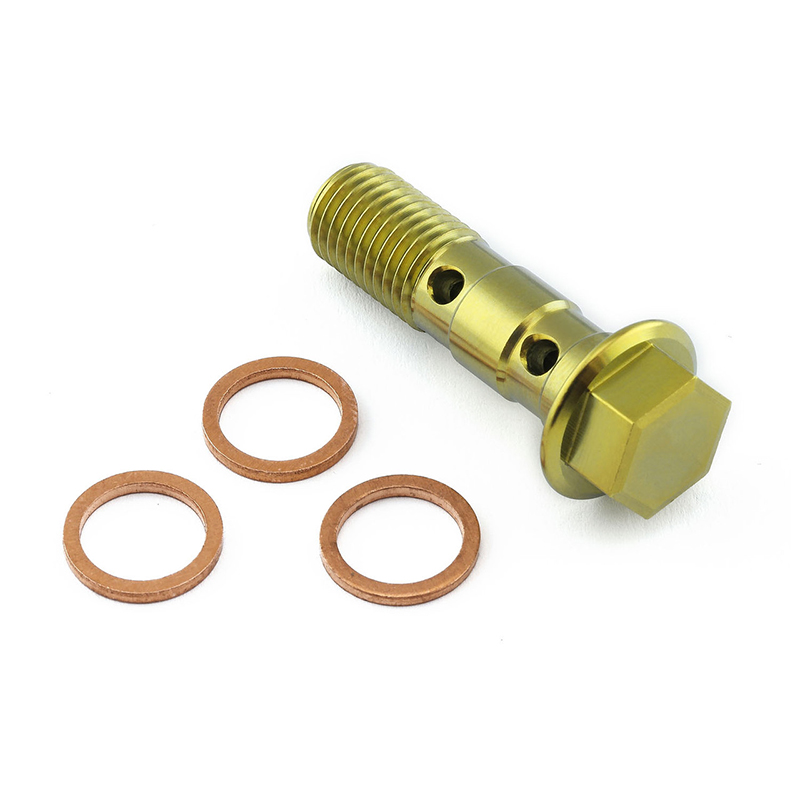

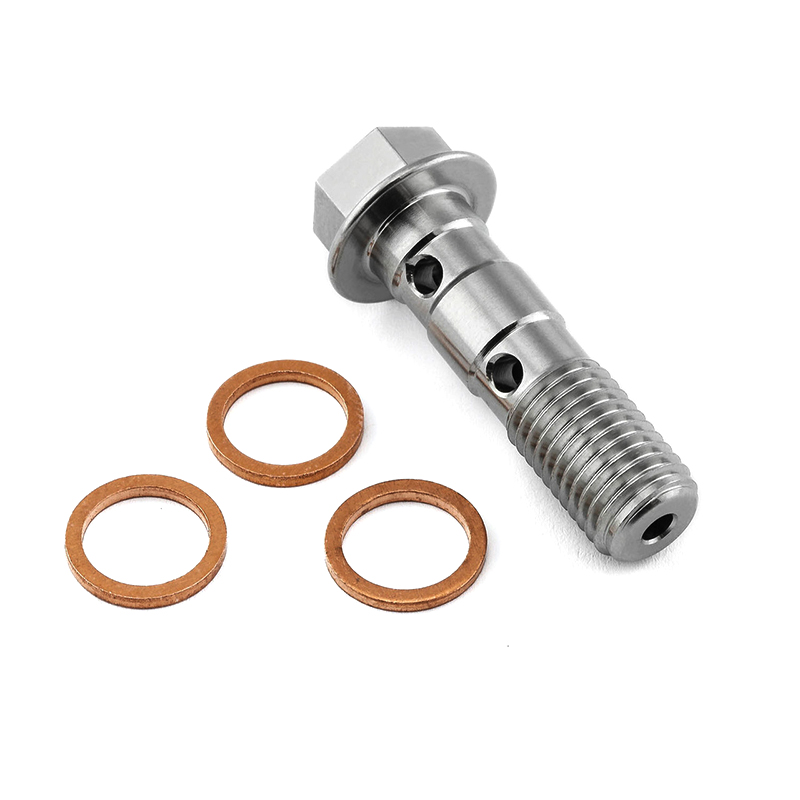
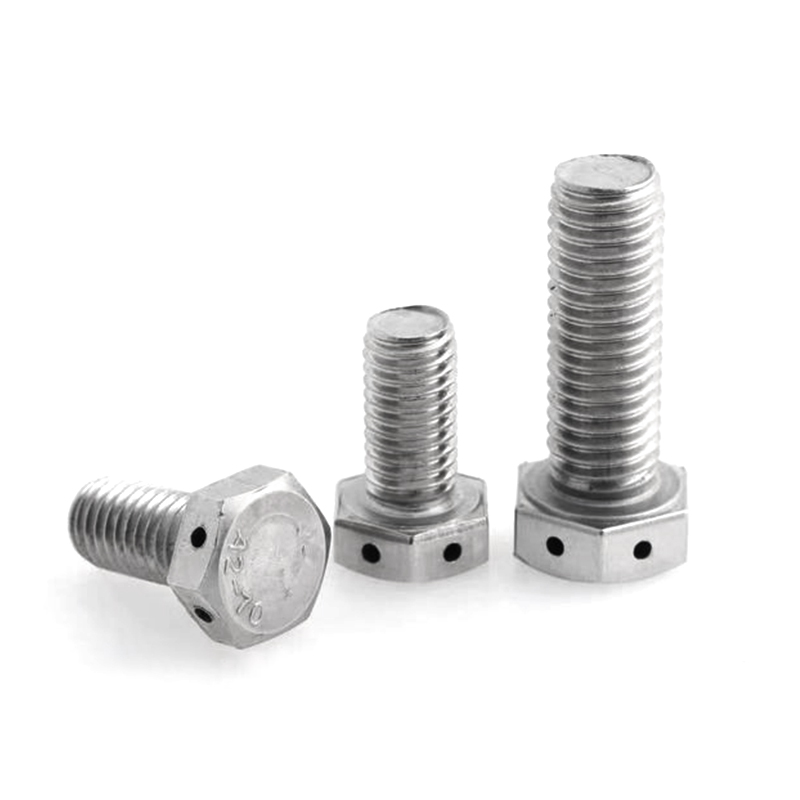
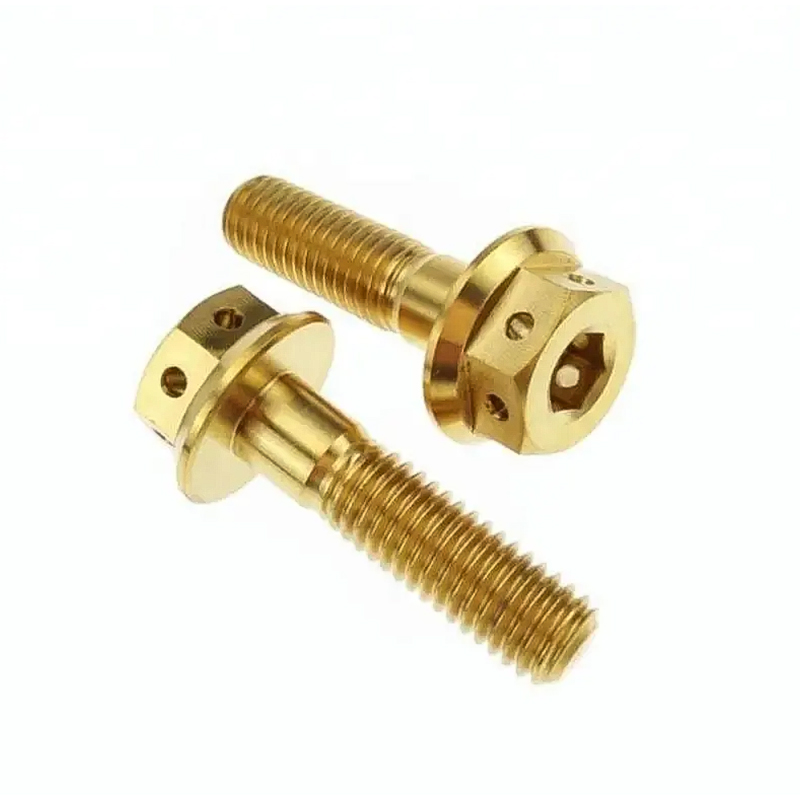
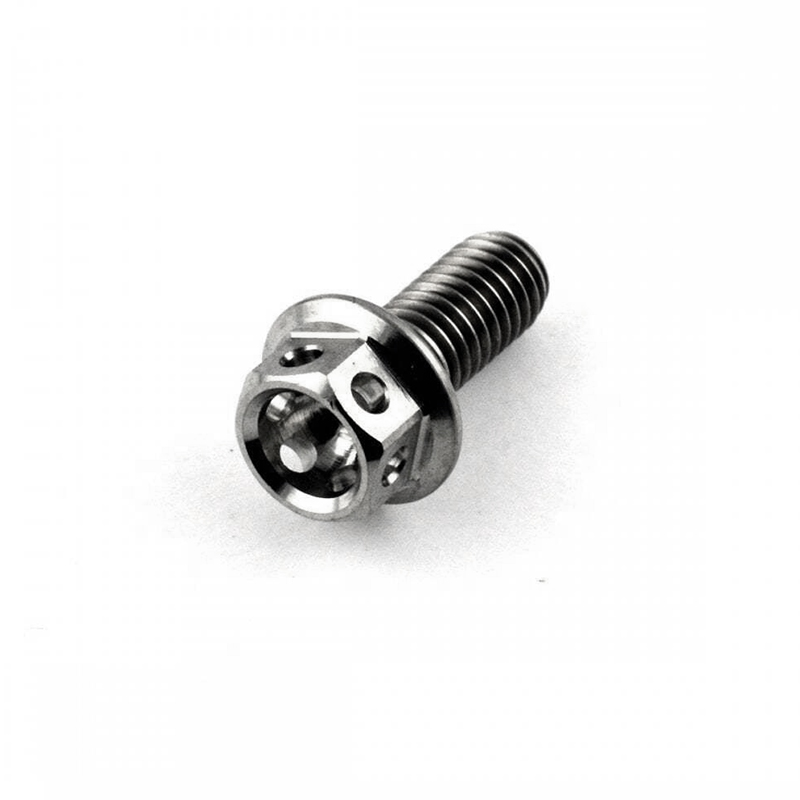

Reviews
There are no reviews yet.